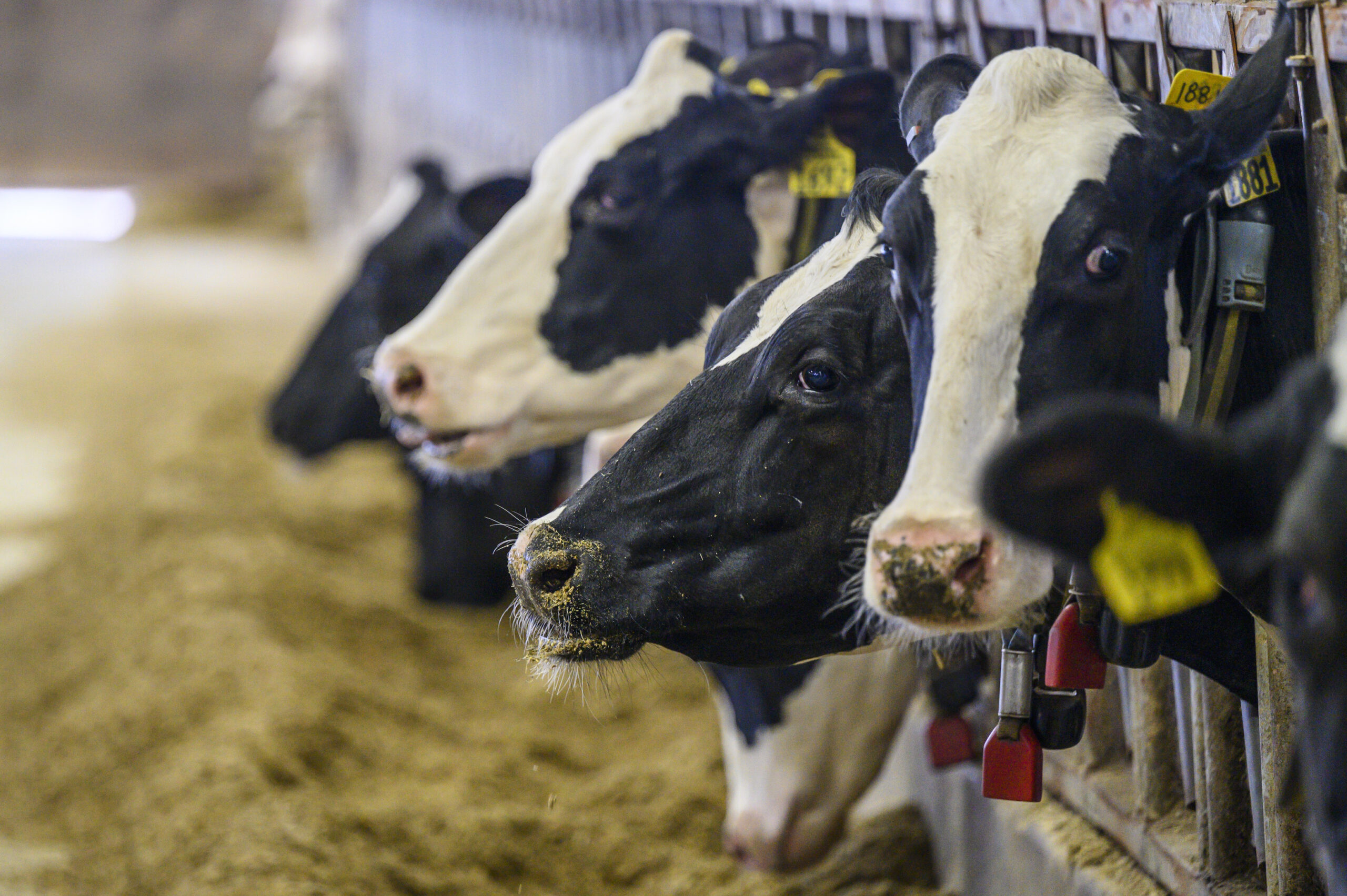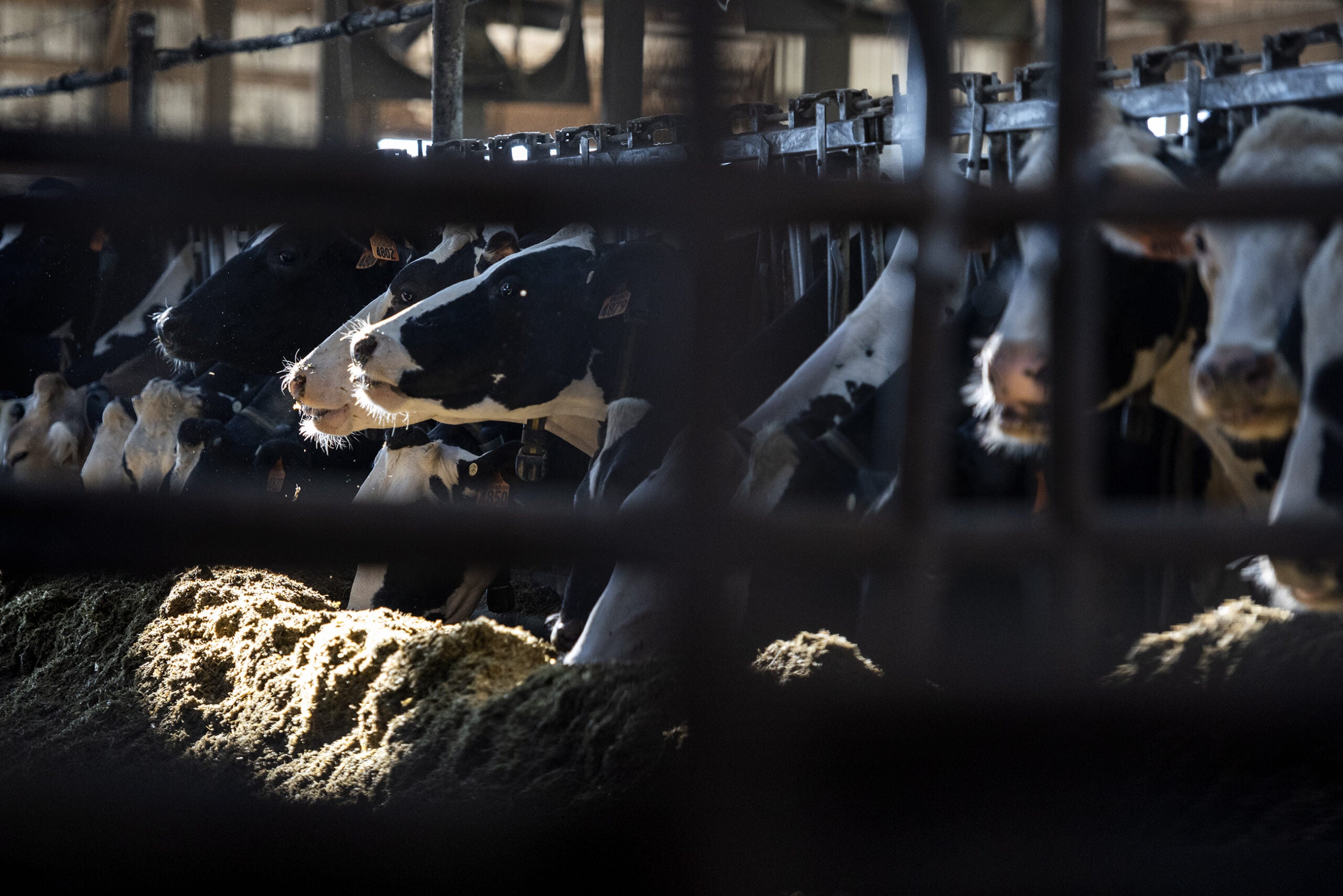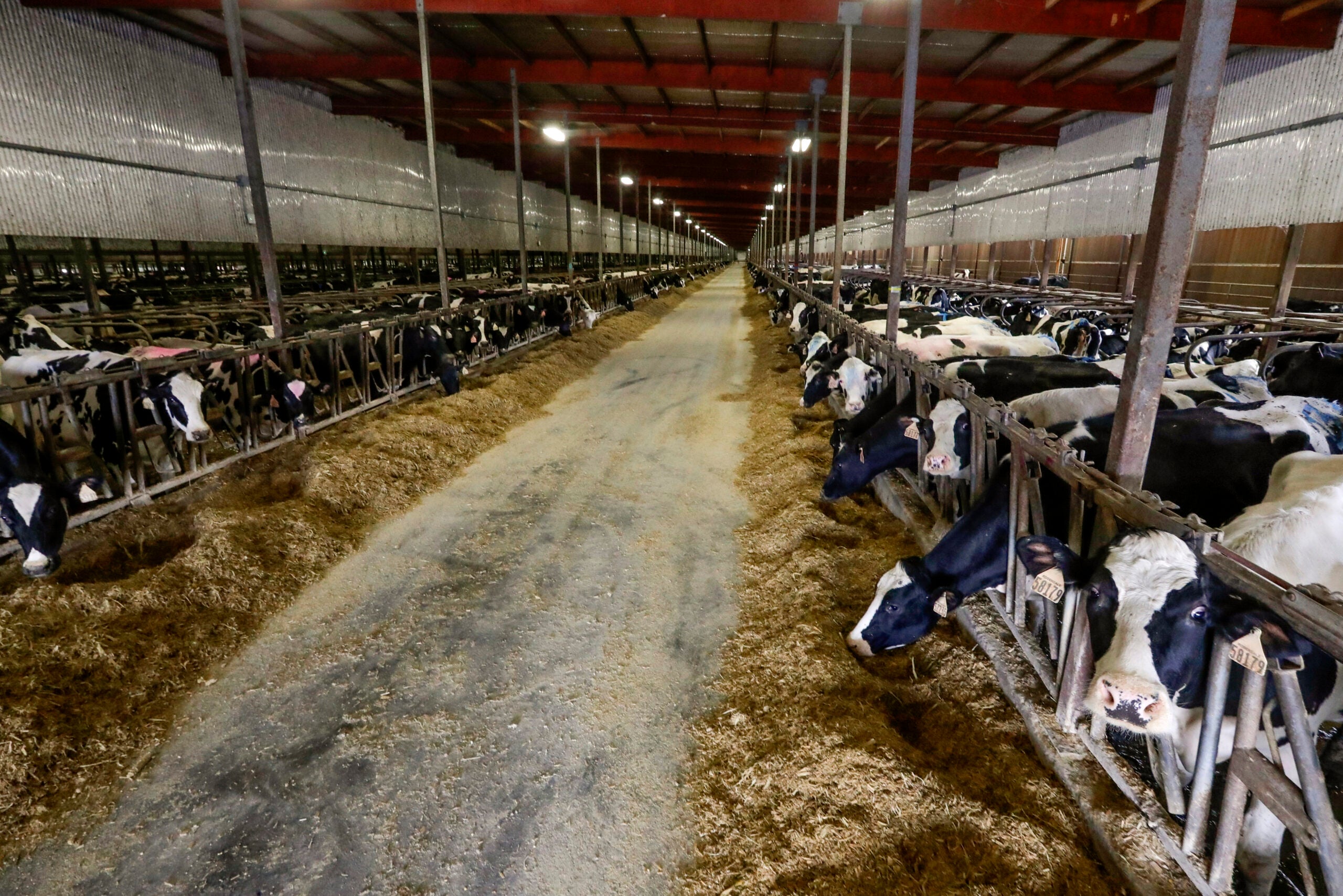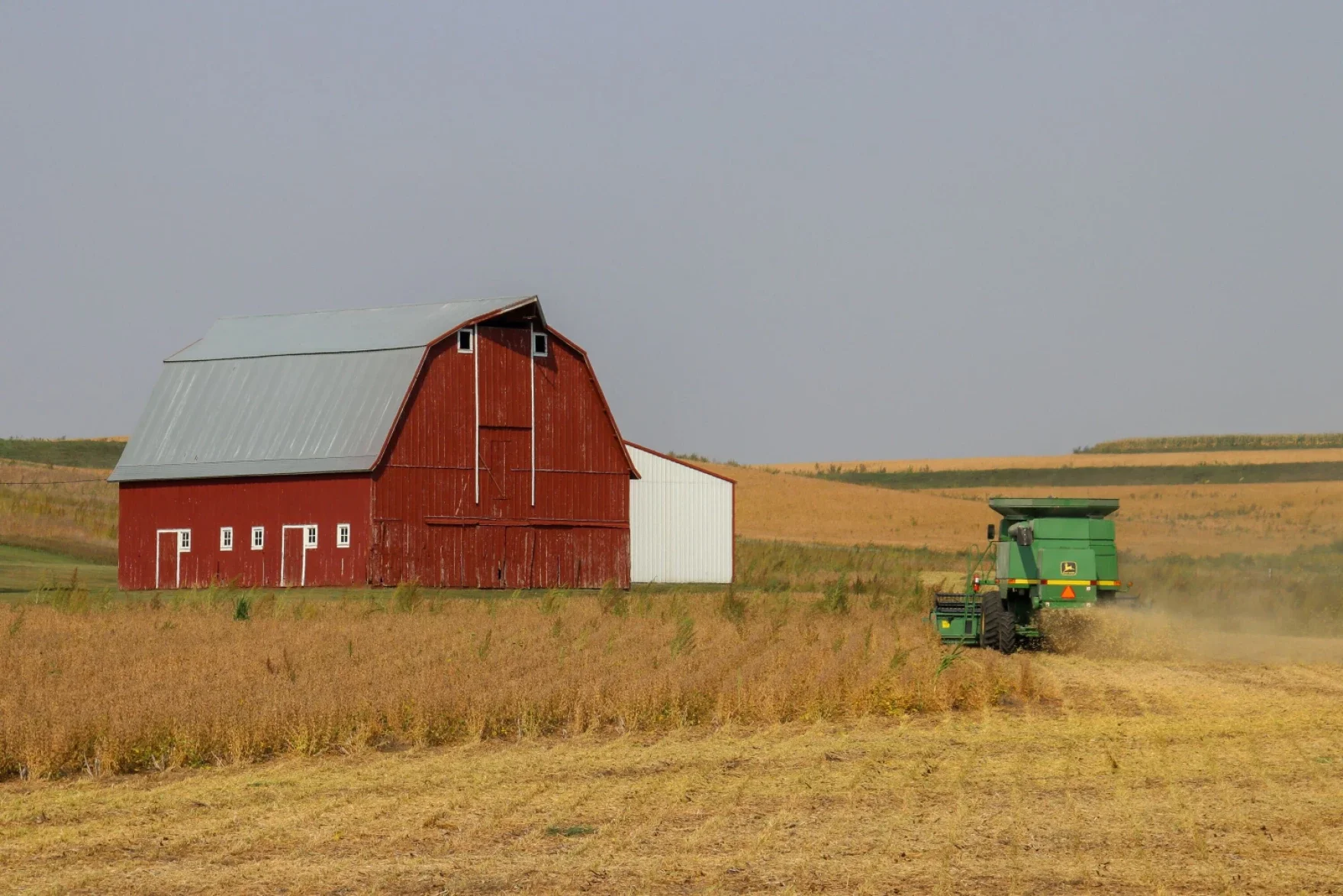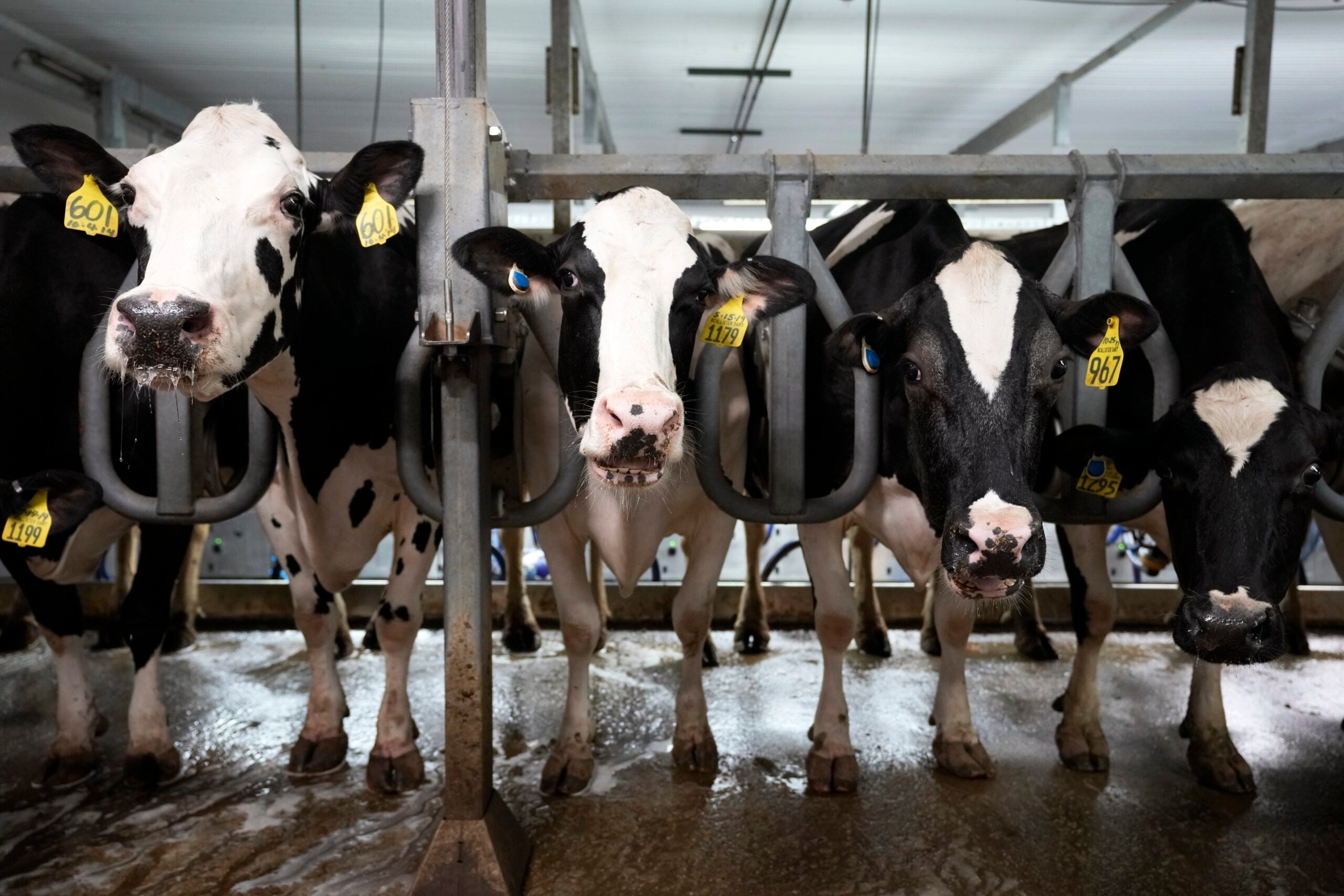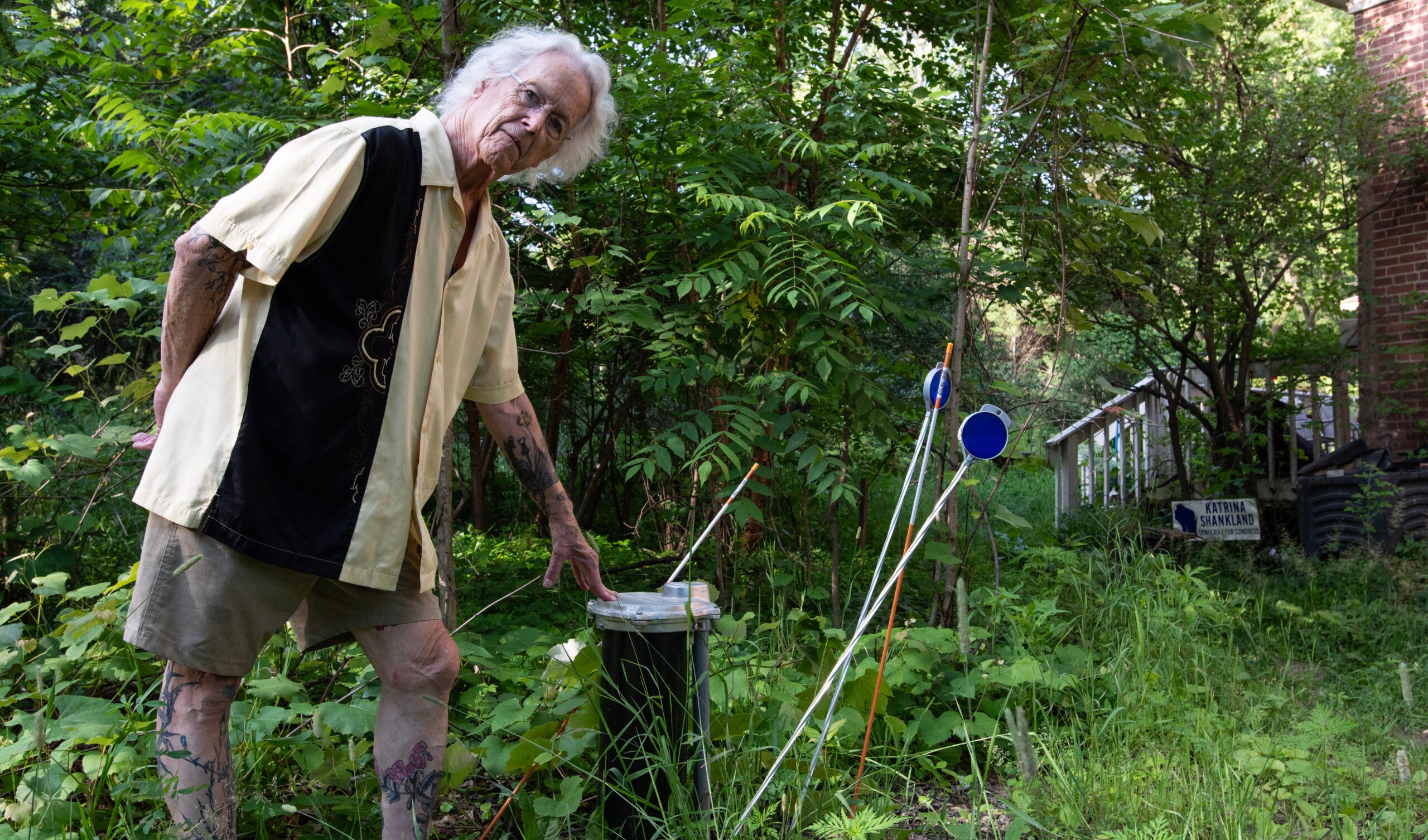While Wisconsin remains an agricultural powerhouse, the number of farms has decreased greatly in recent years.
Wisconsin lost 10 percent of its farms and 30 percent of its dairy farms in a five-year period, according to 2022 data from the U.S. Department of Agriculture released last week.
The latest census tracks changes between 2017 and 2022. The data shows Wisconsin’s remaining farms have more land, higher profits and larger herds.
News with a little more humanity
WPR’s “Wisconsin Today” newsletter keeps you connected to the state you love without feeling overwhelmed. No paywall. No agenda. No corporate filter.
“Some farms have closed their doors, some farms have consolidated, some farms are getting larger. Those are all things that we’ve seen as trends,” said Jason Mugnaini, executive director of governmental relations for the Wisconsin Farm Bureau Federation.
“But there’s definitely some bright spots in terms of the resilience of farmers and their ability to adapt to changing times,” he said.
Wisconsin’s agricultural products had a market value of nearly $16.7 billion in 2022, ranking 10th in the nation. That’s up from $11.4 billion in 2017.
Wisconsin had 58,521 farms in 2022, down nearly 10 percent from 2017. There were 6,216 dairy farms, down from about 9,000 in 2017.
The average farm size was 236 acres in 2022, the largest in more than two decades.
Dairy Business Association CEO Tim Trotter said that kind of consolidation is occurring in many industries.
“People are looking for efficiencies… They know that if they want to be in business, they have to lower their cost,” he said. “So one way of doing that is scaling your business to be a little bit larger than what maybe what your father had.”
Julie Keown-Bomar is the executive director of the Wisconsin Farmers Union. She said consolidation in farming has been happening for decades, and is the result of policy choices.
“The Farm Bill started to shift dramatically in the 1980s, supporting larger, bigger-is-better kinds of strategies. And now we’re seeing the results of that,” she said.
Wisconsin saw a bump in new, younger farmers
The average age of a farmer increased slightly from 56 to 56.7 years old, according to the census.
But Wisconsin saw an increase of 16 percent among new or beginning farmers — those who have been farming a decade or less — since 2017.
“I think the takeaway here is: How do we get more young people involved in farming? How do we provide a pathway and an opportunity?” Trotter said.
He said the costs of starting a farm make it difficult for new people to enter the industry.
“Farming is very capital intensive, you know. You just don’t go to a local bank and borrow $4 million with a signature,” he said.
Nationally, 58 percent of all farms had a female decision-maker in 2022. In Wisconsin, the number of female farmers declined slightly from 2017. It had increased between 2012 and 2017 partly because of a change in the way the census counted demographics.
In 2022, more than 99 percent of Wisconsin farmers were white.
“Right now, the scales are so big that (farming is ) really out of reach for many people who are interested,” Keown-Bomar said.
“I see people every single day that want to farm, including a lot more people of color and women who want to own their own farm and operate it,” she continued. “We just have to really create pathways for that to happen. And right now, we’re making it unreachable.”
Wisconsin Public Radio, © Copyright 2025, Board of Regents of the University of Wisconsin System and Wisconsin Educational Communications Board.

